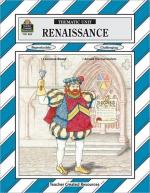|
This section contains 2,037 words (approx. 7 pages at 300 words per page) |

|
Before the Renaissance, astronomy (the observation of heavenly objects) and astrology (using those observations to predict events and human behavior) were closely aligned. Rulers and average citizens alike consulted astrologers for advice. German Johannes Kepler (1571–1630), who served as imperial mathematician to Holy Roman Emperor Rudolph II (1552–1612), was renowned as both astronomer and astrologer. A highly accomplished scientist, he discovered the three principles of planetary motion, further explained the spatial organization of the solar system, and founded modern optics when he presented the first accurate description of how human beings see. Physicist Albert Einstein described Kepler as a true Renaissance scientist in that he sought truth despite the personal cost to him: "Neither by poverty, nor incomprehension of the contemporaries who ruled over the conditions of his life and work, did he allow himself to be crippled or discouraged. In addition, he dealt with...
|
This section contains 2,037 words (approx. 7 pages at 300 words per page) |

|




